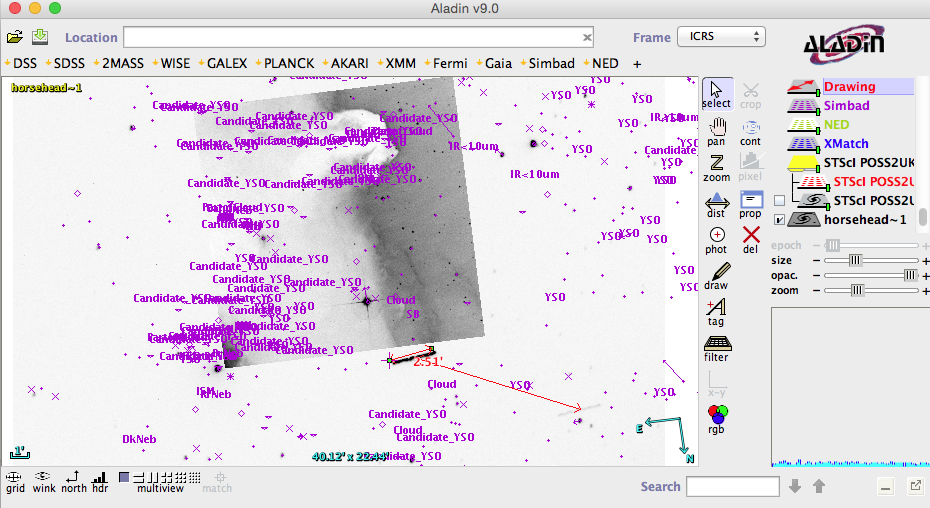Observations
- All
- Adaptive Optics
- Asteroids
- ATA
- Comet
- Conference
- Corot
- Discovery
- Discussion
- Diversity
- ELTs
- Exo-Planets
- FIRST
- Galileoscope
- Group
- Hawaii
- HD 10180
- History
- HST
- Io
- IYA
- Keck
- Kepler
- Mars
- Mauna Kea
- Mission
- Moon
- Multiple Exoplanet Systems
- Observations
- Personal
- Seminar
- SETI Institute
- Space Mission
- Thoughts
- Titan
- TMT
- UC-Berkeley
- Uncategorized
- Unistellar
- VLT
- Volcanism
Capturing a Snapshot of Pluto’s Atmosphere. The Story of an Occultation

Last Tuesday night, a large number of amateur and professional astronomers located across Mexico, the US, and Canada took advantage of a rare and exciting opportunity: observe a blinking star while Pluto occulted it. In Southern California, the SETI Institute, the Observatoire de Paris, Unistellar, and Oceanside Photo and Telescope (OPT), one of the largest telescope retailers in the world, collaborated to observe this rare event and gather the precious data we need to understand Pluto’s atmosphere and climate. Here is our story.
Like most events in the world of modern astronomy, this one started with an email.
In February 2018, I... read more ❯
Seeing the Sombrero Galaxy Seen From Cities

I am happy to share with you an update from Unistellar. Our team has recently collected a pair of images of the glorious Sombrero Galaxy (M104 in the Messier Catalog) taken during one of the most recent observing runs.
Both images were taken in heavily light-polluted environments, the first near Marseille, in the south of France, on May 17 and the second from San Francisco, California on May 14. As usual, these are unedited images, and they clearly show what you can see with our eVscope prototype after just a few hundreds of seconds of observing.
Sombrero Galaxy (M104) taken from San Francisco, on... read more ❯
Intriguing pair of satellites caught with the eVscope

If you often look at the evening dark sky in a clear area far away from the city, you have probably seen a speck of light which moves with respect to the star, that's probably a distant satellite that shines because it reflects the light of the sun at high altitude. According to NASA's Orbital Debris Program office, there are an about 21,000 large debris (>10 cm) and satellites orbiting around Earth right now, so much more than you can see with your naked eye.
The eVscope is designed to pinpoint and image Deep Sky Objects (nebulae, galaxies), but we have already shown its... read more ❯
Saying Hello to Pluto from San Francisco with the eVscope

Observing Report #2 – September 25, 2017
A few days ago we announced the direct imaging of Pluto through the eyepiece of a Unistellar eVscope prototype located in Marseille, France. To make sure that this was not a fluke, I decided to try to observe Pluto from San Francisco— more precisely, from my little backyard in the middle of the city. And we succeeded!
Animation showing two observations of the same area of the sky taken with Unisteller’s eVscope. The dwarf planet Pluto (cyan circles) is moving with respect to the stars. The green circle shows the location... read more ❯
Starfest in Central Park: Urban Astronomy for All

Last week I traveled from San Francisco to New York City to attend Autumn Starfest, which is sponsored by the Amateur Astronomers Association (AAA) of New York. This star party’s most amazing feature is its location—right in the middle of Manhattan, in the magnificent Central Park! And after flying 2,600 miles (4,100 km), I was eager to show attendees that the Unistellar eVscope will let them see faint targets in the night sky—even the sky of this immense city, with all of its light and other forms of pollution.
And the great news is that the event, and our telescope, were a huge success.
[caption... read more ❯
L’institut SETI et Unistellar s’associent pour révolutionner l’Astronomie et la Science Citoyenne

19 juillet 2017 Mountain View, Californie, Etats Unis et Meyreuil, France — L’Institut SETI et la start-up française Unistellar annoncent aujourd’hui un partenariat, dans le but de commercialiser un nouveau télescope offrant aux astronomes amateurs une qualité d’observation du ciel sans précédent, ainsi que l’opportunité de contribuer de façon déterminante aux dernières découvertes des astronomes professionnels.
L’eVscopeTM (Enhanced Vision Telescope) d’Unistellar atteint cet objectif grâce à trois fonctions qui n’ont jamais encore été rassemblées au sein d’un appareil compact et destiné au grand public:
La Vision Amplifiée,... read more ❯
Surprising discovery: a ring around an asteroid
Some may say that our universe is full of beauty, others argue that it is our solar system that surprises us the most, but ultimately I will say that it is the world of small solar system bodies which is strikingly full of diversity. Today's announcement of the discovery of rings around the Centaur Chariklo by an international team of astronomers is a vivid proof that small solar system bodies have not yet revealed all their secrets.
My recent work has made me realize that asteroids (also called small solar system bodies or minor planets) are in fact real mini-geological worlds.... read more ❯
The Next Step in Exoplanetary Science: Imaging New Worlds
In 2003, I was lucky enough to be part of a small group of astronomers that met at the University of California at Berkeley to brainstorm on an innovative idea: the design of an instrument to image and characterize planets around other stars, called exoplanets, using a telescope in the 8 – 10 meter class. A decade later, such an instrument became reality with the arrival of the Gemini Planet Imager (called also GPI, or “Gee-pie”) instrument at the Gemini South telescope in Chile.
Five known planetary systems imaged with current adaptive optics systems. Fomalhaut shown on... read more ❯
Asteroid Minerva finds its magical weapons in the sky

The International Astronomical Union has chosen the names Aegis and Gorgoneion for the two moons of the asteroid (93) Minerva. My team discovered the small moons in 2009 using the W. M. Keck Telescope and its adaptive optics system. We proposed the names after receiving input from the public.
Astronomer J.C. Watson discovered (93) Minerva, a large 150 km diameter asteroid located in the main belt, on Aug. 24, 1867... read more ❯
The French Pyrénées becomes the second-largest international dark sky reserve in the world
Adapted from IDA press release http://www.darksky.org TUCSON, AZ, AND TOULOUSE, FRANCE, 19 December 2013 –
The International Dark-Sky Association (IDA) announced today the designation of the first International Dark Sky Place in France. In naming the Pic du Midi International Dark Sky Reserve (IDSR), IDA is pleased to recognize the immense local efforts to preserve and protect the exceptionally dark night skies over the Pyrénées Mountains
“In creating the Reserve, the Pic du Midi team has not only protected a vanishing resource, they have made it better than it was,” said IDA Executive Director Bob Parks. “We commend and celebrate their exceptional... read more ❯